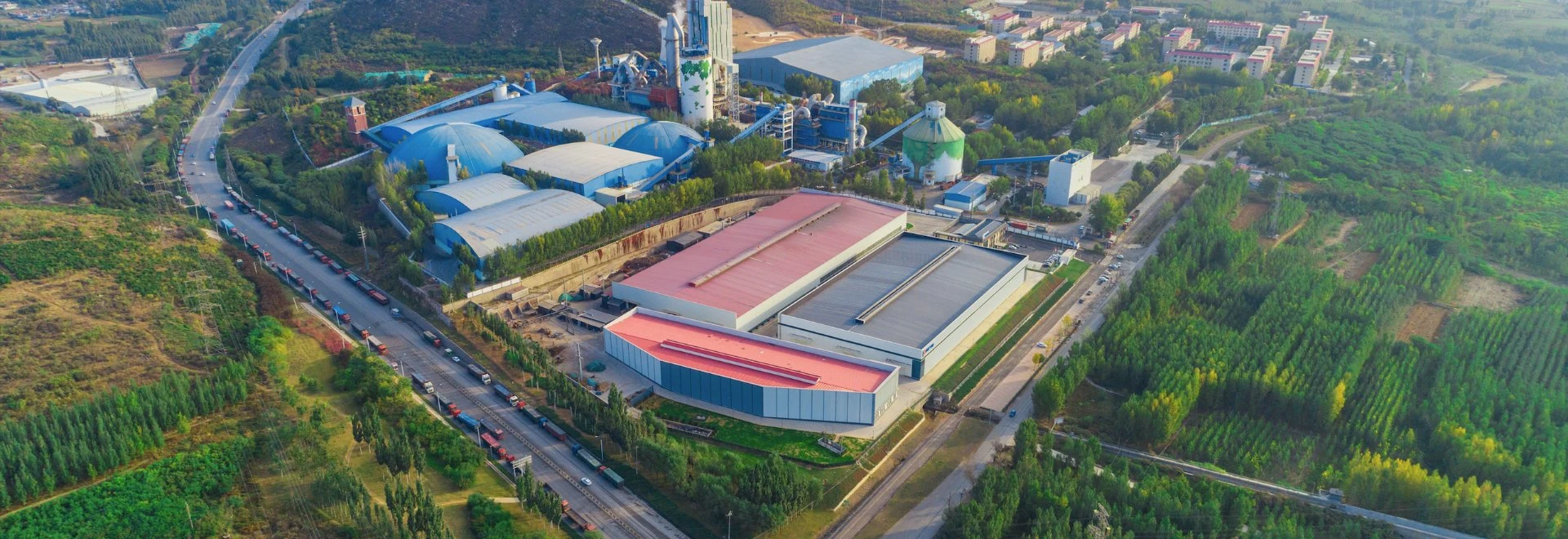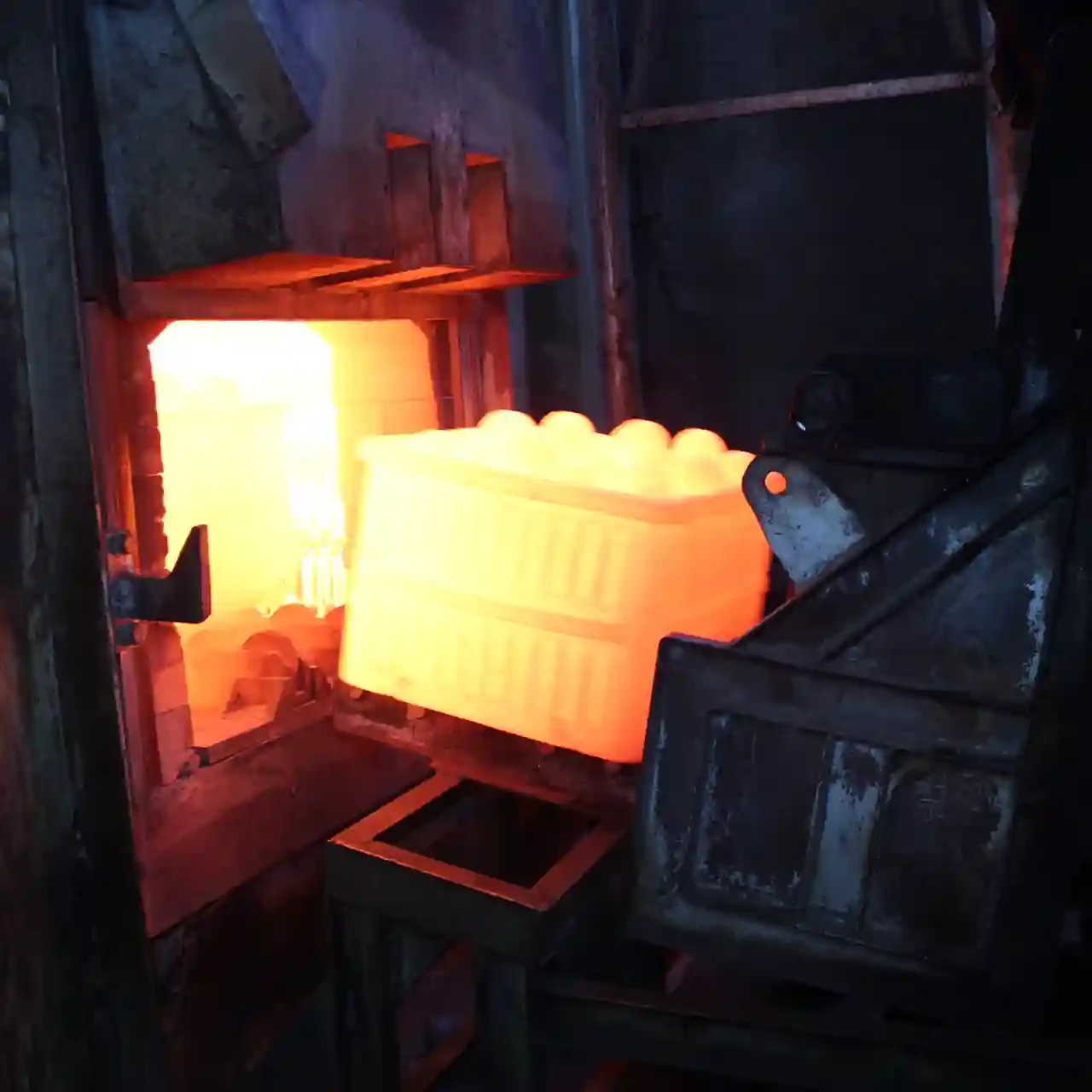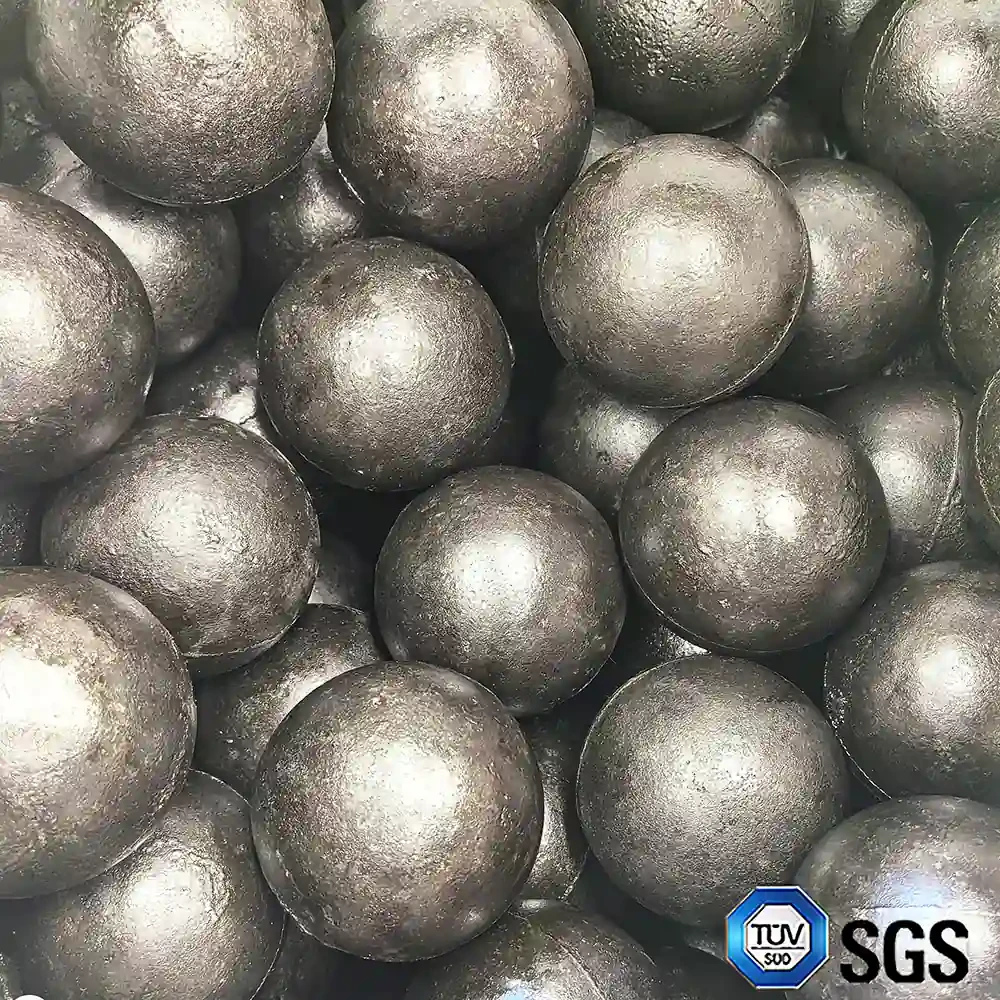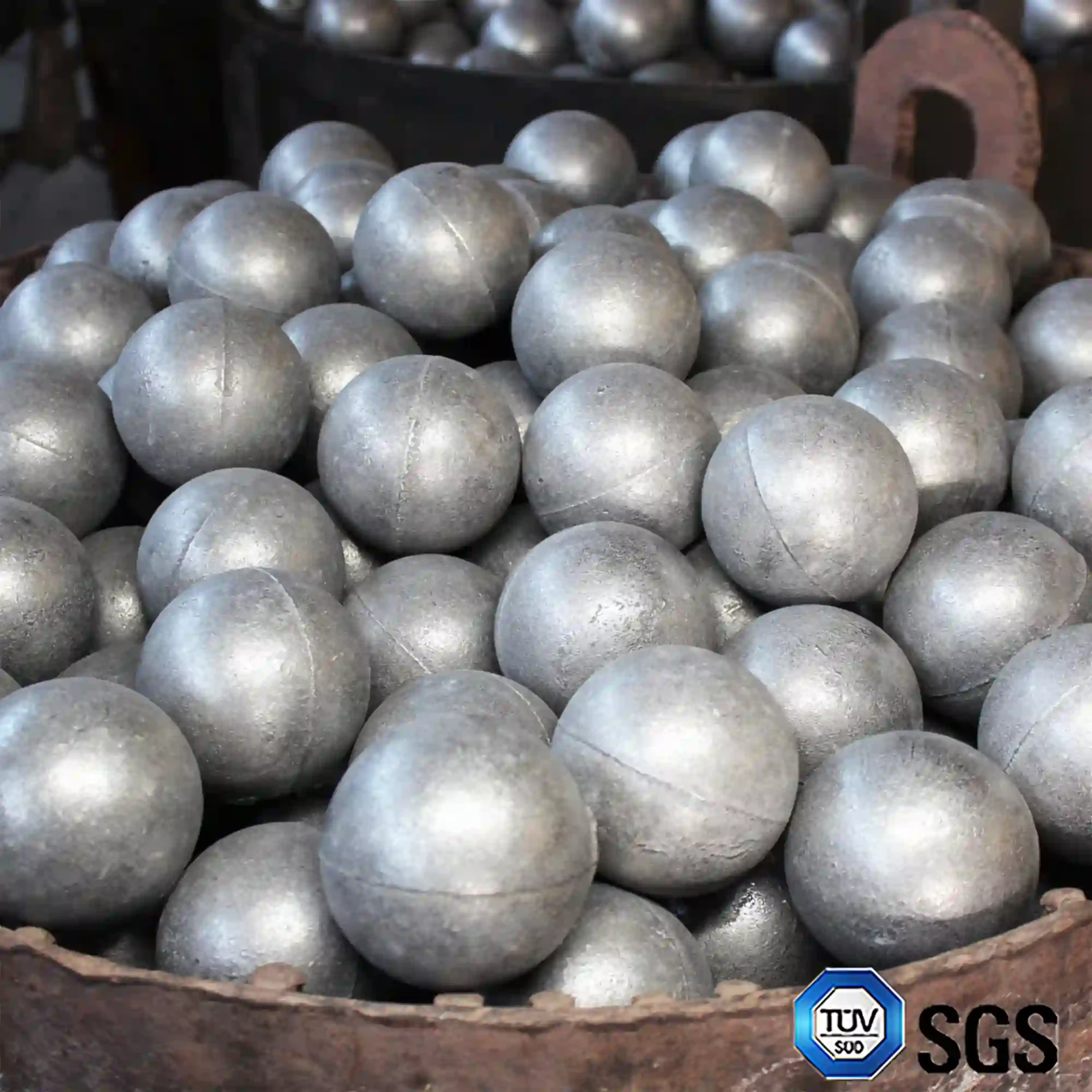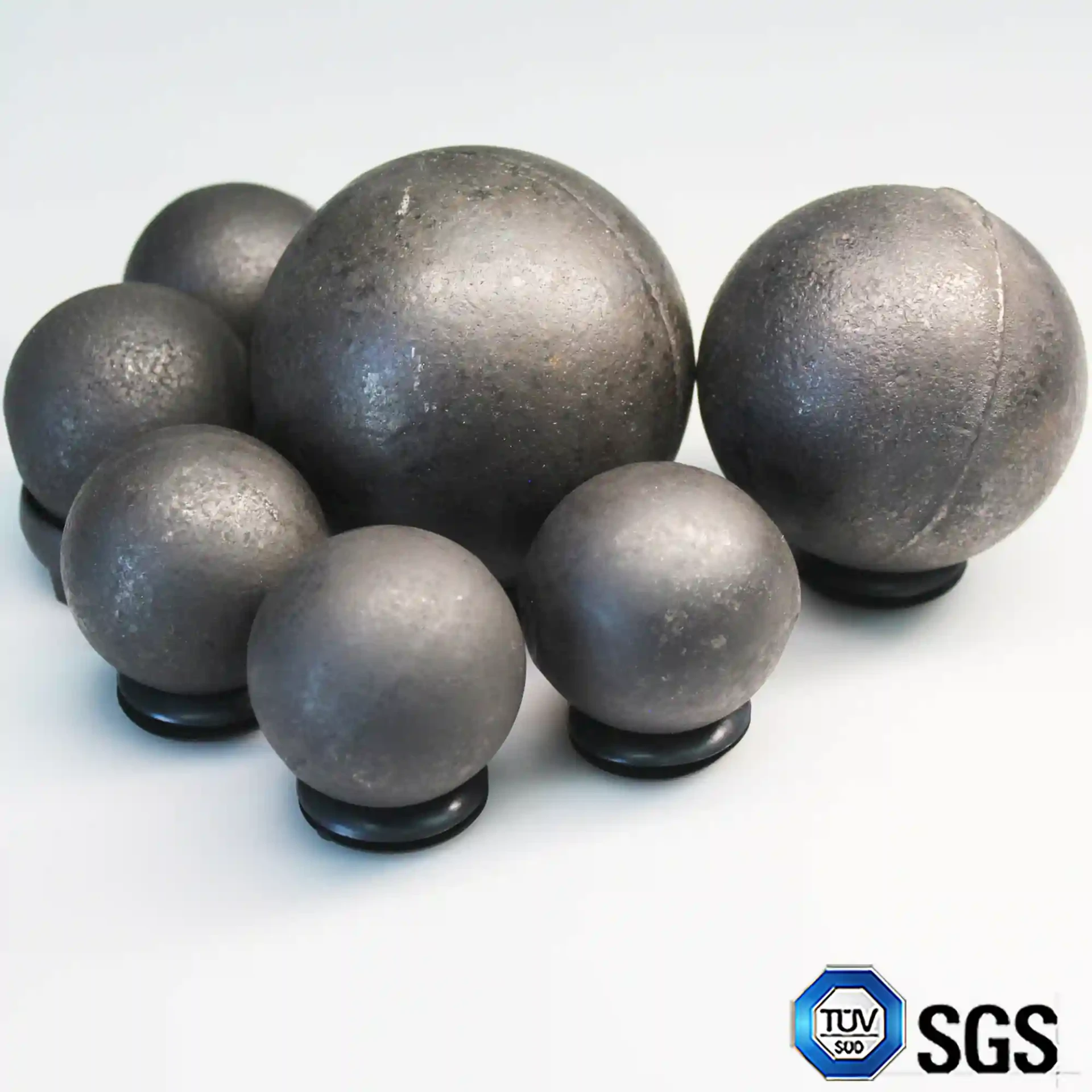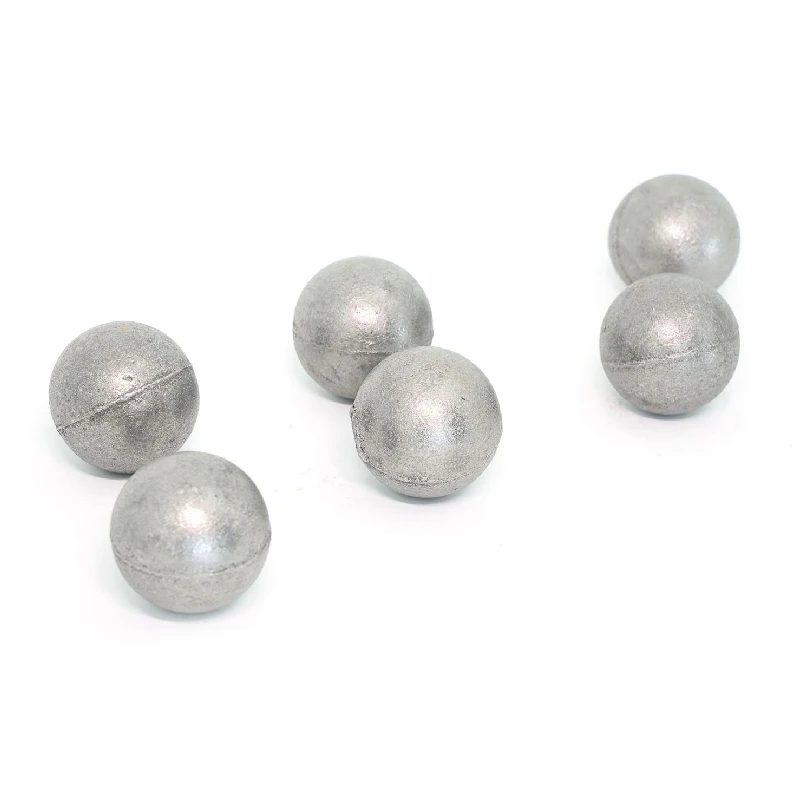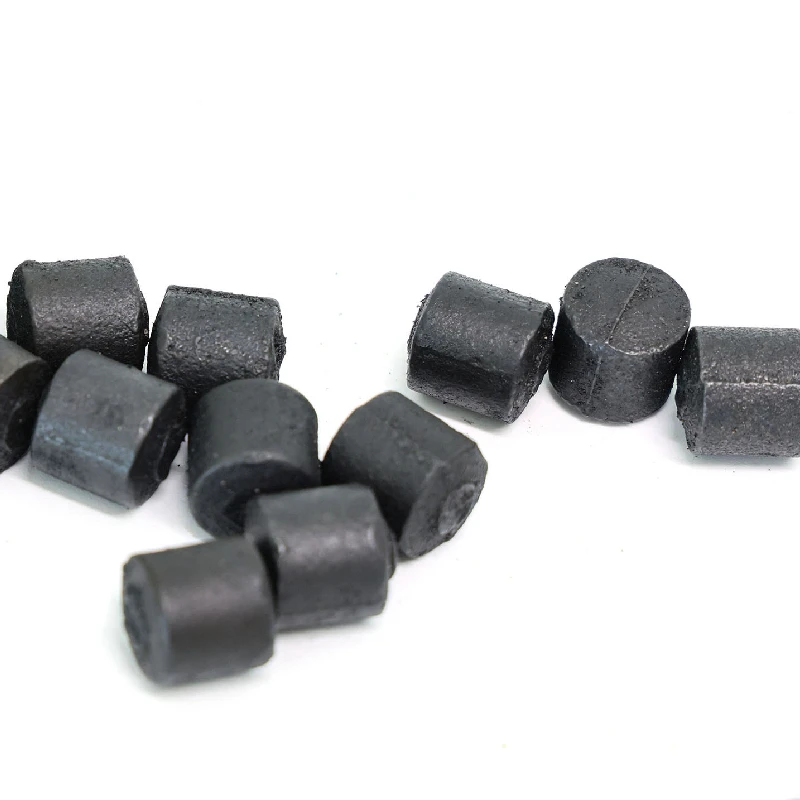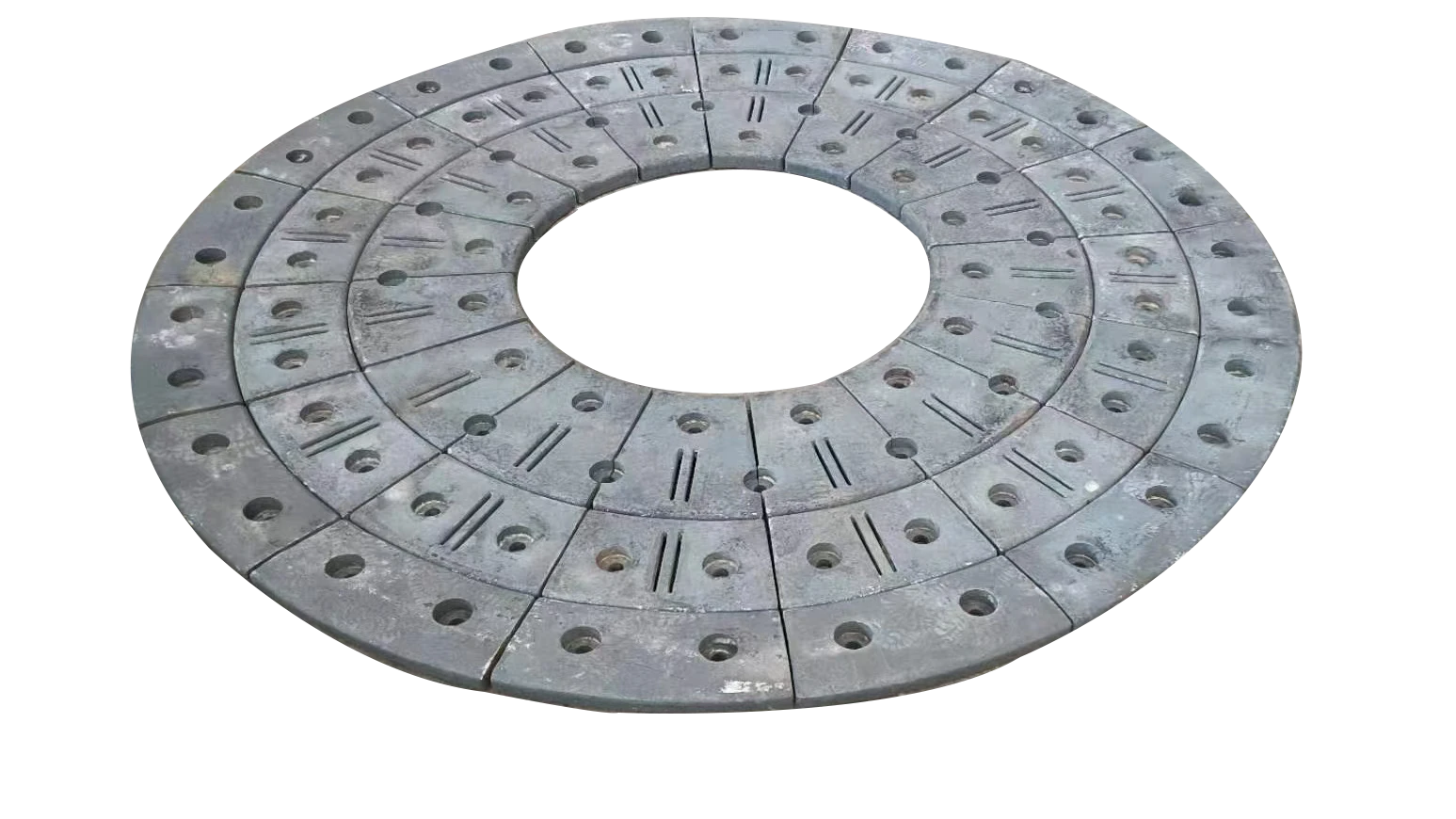Aug . 08, 2025 04:20 Back to list
Low Chrome Grinding Media: Durable & Cost-Effective Solutions
In the demanding world of industrial grinding, the choice of grinding media significantly impacts operational efficiency, energy consumption, and product quality. Among the various types available, low chrome grinding media has emerged as a cost-effective and high-performance solution, especially for applications where extreme wear resistance is not the sole priority but rather a balanced performance of hardness and toughness is required. This comprehensive guide delves into the characteristics, advantages, manufacturing processes, and applications of low chrome grinding media, particularly focusing on the Medium Chrome Grinding Ball, to provide a deep understanding for industry professionals.
This article provides an in-depth analysis, demonstrating the expertise and experience required to navigate the complexities of grinding technologies. We aim to establish a high level of authoritativeness and trustworthiness through detailed technical parameters, real-world application insights, and adherence to industry standards.
Industry Trends and the Growing Demand for Low Chrome Solutions
The global industrial grinding market is undergoing a significant transformation, driven by several key trends:
- Sustainability and Energy Efficiency: Industries are increasingly focused on reducing their environmental footprint and operational costs. Grinding operations are energy-intensive, and media that reduces specific energy consumption is highly sought after.
- Optimized Performance-to-Cost Ratio: While high-chrome media offers superior wear resistance, its higher cost often leads industries to seek alternatives that provide a better balance between performance and investment. Low chrome grinding media offers this sweet spot.
- Market Diversification: Emerging economies and new industrial applications are expanding the demand for various types of grinding media. The versatility of low chrome grinding media makes it suitable for diverse sectors, from cement and mining to power generation and chemical processing.
- Technological Advancements: Improvements in metallurgy and manufacturing processes allow for the production of increasingly durable and efficient low chrome grinding media, such as `Medium chrome grinding ball`, further boosting its appeal.
The market for grinding media is projected to grow, with a significant portion attributed to cost-effective yet reliable options like low chrome variants. For instance, reports indicate a steady CAGR (Compound Annual Growth Rate) in the industrial minerals processing sector, directly influencing grinding media demand. Countries worldwide, including those seeking `mahlkörper mit niedrigem chromgehalt` (German), `낮은 크롬 연삭 매체` (Korean), `medios de molienda bajos en cromo` (Spanish), `мелющие тела с низким содержанием хрома` (Russian), and `médias de broyage à faible teneur en chrome` (French), are recognizing the value proposition of these versatile grinding solutions.
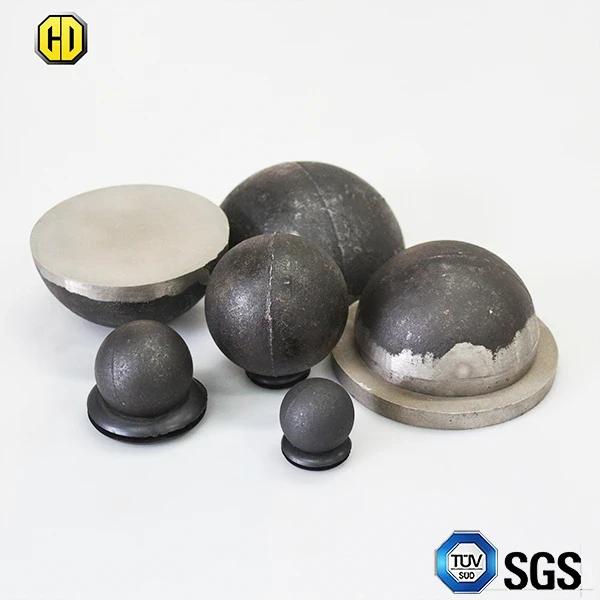
Technical Parameters and Product Specifications: Medium Chrome Grinding Ball
Our flagship product, the Medium Chrome Grinding Ball (product URL: https://www.cdchengda.com/medium-chrome-grinding-ball.html), exemplifies the optimal balance of hardness, toughness, and wear resistance. These balls are engineered to deliver consistent performance, reducing wear rates and optimizing grinding efficiency across various applications.
Key Technical Specifications:
The performance of low chrome grinding media is defined by several critical technical parameters:
- Chemical Composition: Typically contains 1-3% chromium and other alloying elements like carbon, manganese, and silicon. The precise balance of these elements is crucial for achieving desired metallurgical properties. For Medium Chrome Grinding Balls, the chrome content typically ranges from 1.5% to 3.0%, with carbon content usually around 2.0-3.0%, ensuring good hardness after heat treatment.
- Hardness (HRC): Measured on the Rockwell C scale, hardness directly correlates with wear resistance. Medium Chrome Grinding Balls generally exhibit a surface hardness of HRC 58-65 and a volumetric hardness of HRC 55-63. This ensures resistance to abrasion and impact.
- Impact Toughness (Charpy Value): This measures the material's ability to absorb energy and deform plastically before fracturing. A higher impact toughness is critical to prevent breakage, especially in impact-heavy mills. Our media typically boasts a superior impact value, often exceeding 3 J/cm², preventing premature fracturing.
- Specific Gravity/Density: The density of the grinding media affects its grinding efficiency and energy transfer. Medium Chrome Grinding Balls have a density of approximately 7.8 g/cm³, ensuring efficient kinetic energy transfer during milling.
- Microstructure: The microstructure, primarily martensitic or pearlitic, is controlled through precise heat treatment. A fine, uniform martensitic structure with distributed carbides is ideal for wear resistance and toughness.
- Wear Rate: Expressed as grams of media consumed per ton of material ground. For `Medium chrome grinding ball`, the wear rate is significantly lower than forged steel or high-manganese steel balls, leading to substantial cost savings. Typical wear rates are often 0.3-0.8 kg/ton, depending on the application and material being ground.
Typical Product Specification Table for Medium Chrome Grinding Ball
| Parameter | Medium Chrome Grinding Ball (Typical Range) | Standard Test Method/Unit |
|---|---|---|
| Chromium (Cr) Content | 1.5% - 3.0% | ASTM E1086 (Chemical Analysis) |
| Carbon (C) Content | 2.0% - 3.0% | ASTM E1019 (Chemical Analysis) |
| Silicon (Si) Content | 0.4% - 1.0% | ASTM E1019 (Chemical Analysis) |
| Manganese (Mn) Content | 0.4% - 1.2% | ASTM E1019 (Chemical Analysis) |
| Surface Hardness (HRC) | 58 - 65 | ASTM E18 (Rockwell Hardness Test) |
| Volumetric Hardness (HRC) | 55 - 63 | ASTM E18 (Rockwell Hardness Test) |
| Impact Toughness (J/cm²) | ≥ 3.0 | ASTM E23 (Charpy Impact Test) |
| Density (g/cm³) | 7.7 - 7.9 | ASTM D792 (Density Measurement) |
| Size Range (mm) | Ø15 - Ø120 | EN 993-1 (Dimensional Accuracy) |
| Breakage Rate | ≤ 0.5% | Internal Quality Control Standard |
| Corrosion Resistance | Good (especially against abrasive slurries) | Industry Application Feedback |
These parameters underscore the superior quality and engineering behind our low chrome grinding media, designed to meet rigorous industrial demands and outperform conventional alternatives.
Application Scenarios and Industry Use Cases
The versatility and balanced properties of low chrome grinding media make them indispensable across a multitude of industries. Their resistance to wear, combined with sufficient toughness, enables efficient grinding in both wet and dry milling environments. Here are some primary application scenarios:
- Mining Industry: Used extensively in SAG (Semi-Autogenous Grinding) and ball mills for grinding various ores such as gold, copper, iron, and lead-zinc. The `Medium chrome grinding ball` ensures consistent particle size reduction and optimizes downstream processing.
- Cement Production: Essential for clinker grinding, raw material grinding, and coal grinding in cement plants. The media's ability to resist abrasion from hard clinker significantly extends mill liner and media life, contributing to energy saving and reduced maintenance.
- Power Generation (Thermal Power Plants): Critical for coal grinding in pulverizers to prepare fuel for combustion. The high wear resistance ensures efficient pulverization and continuous operation, preventing costly downtime.
- Chemical Industry: Employed in various grinding processes for fine chemicals, pigments, and other raw materials where consistent particle size is crucial for product quality.
- Ceramics and Glass Production: Used for grinding raw materials like quartz, feldspar, and clay to achieve desired fineness for ceramic bodies and glass batches.
- Water Supply and Drainage (Aggregate Preparation): While not directly for water treatment, these balls are used in grinding operations for preparing aggregates and construction materials which are essential for infrastructure development in water and drainage systems.
In all these applications, the advantages of `Medium chrome grinding ball` are clear: reduced media consumption, lower energy requirements due to optimized grinding efficiency, and extended service intervals, all contributing to a lower total cost of ownership (TCO).
Technical Advantages of Medium Chrome Grinding Ball
Choosing the right grinding media can translate into significant operational benefits. Our low chrome grinding media, particularly the Medium Chrome Grinding Ball, offers distinct technical advantages:
- Extended Service Life: Compared to traditional forged or cast steel balls, the optimized microstructure and hardness of our `Medium chrome grinding ball` lead to significantly longer operational lifespan, reducing the frequency of media replenishment. This is attributed to superior wear resistance (abrasion and impact).
- Reduced Energy Consumption: Due to their optimal density and surface characteristics, these balls ensure efficient transfer of kinetic energy to the material, leading to improved grinding efficiency. This can result in a noticeable reduction in specific energy consumption (kWh/ton) by 5-10% compared to conventional media.
- Lower Specific Wear Rate: The rate at which the grinding media wears down per unit of material processed is a critical economic factor. Our low chrome grinding media boasts a low specific wear rate, meaning less media is consumed over time, directly translating to lower operational costs.
- Consistent Performance: The uniform hardness and metallurgical structure from core to surface ensure predictable grinding performance throughout the media's life, minimizing inconsistencies in product fineness.
- Excellent Toughness: While offering good hardness, these balls also maintain excellent toughness, minimizing breakage (spalling and chipping), especially under high impact loads found in ball mills. This contributes to safer operation and reduced foreign material contamination.
- Corrosion Resistance: For wet grinding applications, `Medium chrome grinding ball` offers improved resistance to corrosion compared to carbon steel balls, which helps maintain ball integrity and prevents premature deterioration.
- Cost-Effectiveness: Considering the extended lifespan, reduced wear rate, and energy savings, the overall lifecycle cost of low chrome grinding media is highly competitive, offering a superior return on investment.
Manufacturing Process: Crafting Excellence in Low Chrome Grinding Media
The quality and performance of low chrome grinding media are a direct result of a meticulously controlled manufacturing process. From raw material selection to final inspection, every step is crucial. Our `Medium chrome grinding ball` production adheres to stringent international standards, including ISO 9001 for quality management and relevant ASTM/ANSI standards for material specifications and testing.
Detailed Manufacturing Process Flow for Low Chrome Grinding Media:
Raw Material Selection & Preparation
High-quality alloy steel scrap and specific alloying elements (e.g., ferrochrome, ferromanganese, ferrosilicon) are carefully selected based on precise chemical composition requirements. This ensures the foundational metallurgical properties are met. Materials undergo stringent incoming quality checks to confirm compliance with ASTM A148/A27 standards.
Melting & Alloying
Raw materials are melted in electric arc furnaces (EAF) or induction furnaces. During this stage, precise quantities of alloying elements are added to achieve the targeted chemical composition for low chrome grinding media. This is critical for controlling hardness, toughness, and wear resistance.
Casting (or Forging for other types)
For Medium Chrome Grinding Balls, the molten metal is poured into pre-heated sand molds (static casting) or permanent molds (semi-permanent casting) to form the spherical shape. The casting process is carefully controlled to prevent defects such as porosity or shrinkage. Some specialized media might involve forging for enhanced density and grain structure, but casting is typical for low chrome balls.
Cooling & Demoulding
After casting, the balls are allowed to cool to a specific temperature before demoulding. This controlled cooling process helps in initial microstructure formation and stress relief.
Heat Treatment: Quenching & Tempering (The Core Process)
This is the most critical step for developing the desired properties of low chrome grinding media.
- Quenching: Balls are heated to a specific austenitizing temperature (e.g., 850-900°C) and then rapidly cooled in a controlled quenching medium (e.g., oil, water, or air) to achieve a hard martensitic structure.
- Tempering: The quenched balls are then reheated to a lower temperature (e.g., 200-400°C) and held for a specific duration, followed by cooling. Tempering reduces brittleness, relieves internal stresses, and adjusts the final hardness and toughness to optimal levels.
Grinding & Surface Finishing (if required)
Depending on the application, some balls may undergo a final grinding process to achieve precise spherical geometry and surface finish, though for most `Medium chrome grinding ball` applications, the as-cast or heat-treated surface is sufficient.
Quality Control & Inspection
Each batch of low chrome grinding media undergoes rigorous quality checks:
- Chemical Analysis: Spectroscopic analysis to verify elemental composition.
- Hardness Testing: Surface and volumetric hardness using Rockwell testers (ASTM E18).
- Impact Testing: Charpy impact testing (ASTM E23) to assess toughness.
- Microstructure Analysis: Metallographic examination to ensure desired grain structure and absence of detrimental phases.
- Dimensional Accuracy: Measurement of diameter, sphericity, and weight (EN 993-1).
- Drop Weight Test/Breakage Test: Simulating impact conditions to determine breakage rate. Our breakage rate is typically below 0.5%.
Packaging & Dispatch
The finished low chrome grinding media are packaged in durable bags, drums, or bulk container111s, ready for dispatch to clients worldwide. Proper packaging ensures protection during transit and easy handling at the client's site.
Simplified Manufacturing Process Diagram for Grinding Media
For a detailed video or interactive diagram of our advanced manufacturing line, please visit our website or contact us.
Manufacturer Comparison and Choosing the Right Partner
Selecting a reliable manufacturer for low chrome grinding media is as crucial as understanding the product itself. The market offers numerous suppliers, but not all adhere to the same stringent quality and consistency standards. When evaluating manufacturers, consider the following:
- Proven Track Record & Experience: A manufacturer with decades of experience in grinding media production, like us, typically possesses the deep technical knowledge and refined processes necessary for consistent high quality. Our long service tenure in the industry, including partnerships with major mining and cement groups, speaks to our reliability.
- Quality Control and Certifications: Look for manufacturers with comprehensive quality management systems (e.g., ISO 9001 certified) and adherence to international testing standards (ASTM, ANSI, EN). This indicates a commitment to delivering products that meet specified performance criteria.
- R&D and Innovation: A forward-thinking manufacturer invests in research and development to continually improve product performance, exploring new alloys and heat treatment methodologies to enhance wear life and efficiency.
- Customization Capabilities: The ability to provide customized solutions based on specific mill types, ore characteristics, and desired fineness is a significant advantage. This includes varying ball sizes (from Ø15mm to Ø120mm for `Medium chrome grinding ball`), hardness ranges, and compositions.
- After-Sales Support & Technical Service: A reputable supplier offers technical support, performance analysis, and problem-solving assistance post-purchase. This can include on-site consultation to optimize grinding parameters.
- Transparent Supply Chain: Understanding the source of raw materials and the integrity of the manufacturing process builds trust.
Our commitment to these principles ensures that clients receive not just a product, but a complete solution backed by expertise, experience, and unwavering trustworthiness.
Customization Solutions and Tailored Performance
Recognizing that every grinding application is unique, we offer comprehensive customization solutions for our low chrome grinding media, including the `Medium chrome grinding ball`. This ensures that our products are precisely tailored to your operational needs, maximizing efficiency and cost-effectiveness.
Our customization process typically involves:
- In-depth Consultation: Understanding your specific grinding conditions, mill type (ball mill, SAG mill), material characteristics (abrasiveness, hardness), desired fineness, and existing operational challenges.
- Material Composition Adjustment: Based on analysis, we can fine-tune the chemical composition (e.g., slight variations in chromium, carbon, or manganese content) to optimize the balance between hardness and toughness for your specific application, especially for abrasive or impact-heavy environments.
- Heat Treatment Optimization: Precise adjustments to the quenching and tempering parameters to achieve a specific hardness profile (surface vs. core) and microstructure that best suits your mill dynamics and material properties.
- Size and Shape Specificity: Offering a wide range of sizes for `Medium chrome grinding ball` (e.g., Ø15mm, Ø20mm, Ø30mm, Ø40mm, Ø60mm, Ø80mm, Ø100mm, Ø120mm) and advising on the optimal grinding media charge for your mill.
- Performance Testing and Validation: Where feasible, conducting pilot tests or providing samples for in-situ performance evaluation to confirm that the customized media meets the desired outcomes before full-scale deployment.
This bespoke approach, combined with our technical expertise, allows clients to achieve superior grinding outcomes that off-the-shelf solutions cannot match. We are able to optimize the `medios de molienda bajos en cromo` for your specific needs, whether you are operating in Latin America, Europe (`mahlkörper mit niedrigem chromgehalt`), or Asia (`낮은 크롬 연삭 매체`).
Application Cases and Success Stories
The real-world performance of low chrome grinding media speaks volumes about its effectiveness. Here are generalized examples based on common industrial challenges and how `Medium chrome grinding ball` provides solutions:
Case Study 1: Cement Clinker Grinding Optimization
A large cement plant in Southeast Asia, facing high grinding media consumption and frequent mill shutdowns due to excessive wear and breakage of conventional forged balls, switched to our `Medium chrome grinding ball`. After a 12-month trial period, the plant reported a 15% reduction in specific grinding media consumption (kg/ton of cement produced) and a 7% decrease in energy consumption per ton. The extended lifespan of the low chrome grinding media also led to a significant reduction in mill downtime for media replenishment, improving overall plant availability by 3%.
Case Study 2: Gold Ore Grinding in a South American Mine
A major gold mining operation in South America, struggling with inconsistent particle size distribution and high power consumption in their primary ball mills, implemented our customized `medios de molienda bajos en cromo` solution. By optimizing the ball charge and utilizing our high-toughness, wear-resistant media, the mine achieved a 10% increase in ore throughput and a reduction in specific power consumption by 8%. The superior impact resistance of the low chrome grinding media also drastically reduced ball breakage, ensuring cleaner concentrate and less mill damage.
Case Study 3: Coal Pulverization for Thermal Power Generation
A thermal power plant in Eastern Europe (`мелющие тела с низким содержанием хрома`) faced challenges with frequent replacement of grinding media in their coal pulverizers due to the abrasive nature of coal. By adopting our `Medium chrome grinding ball`, they observed a 20% extension in the media's operational life, translating to fewer media top-ups and reduced maintenance labor. This directly contributed to a more stable and efficient fuel supply for the power generation process.
These cases demonstrate the tangible benefits of investing in high-quality low chrome grinding media, proving its capacity to deliver significant operational and economic improvements across various industrial sectors.
Frequently Asked Questions (FAQ) about Low Chrome Grinding Media
Q1: What is low chrome grinding media, and how does it differ from high chrome or forged media?
Low chrome grinding media, such as our Medium Chrome Grinding Ball, typically contains 1-3% chromium. It offers an excellent balance of hardness and toughness, making it more wear-resistant than conventional forged steel balls, and more impact-resistant than high chrome media (which contains 10-30% chrome). High chrome media is extremely hard but can be brittle in high-impact mills. Forged media is tough but has lower wear resistance. Low chrome media provides a cost-effective, balanced solution for many applications.
Q2: What are the typical applications for low chrome grinding media?
They are widely used in cement production (clinker, raw material, coal grinding), mining (ore grinding in ball mills, SAG mills), thermal power plants (coal pulverization), and industries requiring general-purpose grinding such as chemical, ceramic, and aggregate processing. Their versatility makes them suitable for both wet and dry grinding.
Q3: How does the manufacturing process (specifically heat treatment) impact the performance of `Medium chrome grinding ball`?
Heat treatment, particularly controlled quenching and tempering, is paramount. It transforms the microstructure of the steel to achieve optimal hardness (typically HRC 58-65) and toughness. Without proper heat treatment, the balls would be either too soft (leading to rapid wear) or too brittle (leading to breakage). Our precise control ensures uniform properties from surface to core, maximizing wear life and impact resistance.
Q4: What are the key inspection standards for low chrome grinding media?
Key inspection standards include ASTM E18 for hardness testing (Rockwell C), ASTM E23 for impact toughness (Charpy test), ASTM E1086/E1019 for chemical composition analysis, and internal standards for breakage rate, specific gravity, and dimensional accuracy (e.g., sphericity, diameter tolerance). Reputable manufacturers also adhere to ISO 9001 quality management system.
Q5: Can low chrome grinding media be customized for specific grinding environments?
Absolutely. We offer customization by adjusting the chemical composition, heat treatment parameters, and ball size (`Medium chrome grinding ball` available from Ø15mm to Ø120mm) to precisely match the specific requirements of your mill and the material being ground. This tailored approach optimizes performance and cost-efficiency.
Q6: What is the typical service life of `Medium chrome grinding ball` compared to other media?
While exact service life depends on application severity, `Medium chrome grinding ball` generally offers 1.5 to 2 times longer service life than conventional forged steel balls and superior toughness in high-impact conditions compared to high chrome cast balls. This leads to reduced media consumption and fewer shutdowns for replenishment.
Q7: How do low chrome grinding media contribute to energy savings?
Their optimal density, superior hardness, and uniform wear patterns ensure more efficient energy transfer during the grinding process. This results in less energy wasted as heat or unnecessary impact, leading to a reduction in specific energy consumption (kWh/ton) by facilitating faster and more effective material comminution compared to media with inconsistent properties or higher wear rates.
Delivery and Customer Support: Our Commitment to Trustworthiness
At our core, we believe that providing exceptional products like low chrome grinding media must be complemented by reliable delivery and robust customer support. Our commitment to trustworthiness extends beyond product quality:
- Efficient Order Processing & Delivery: We maintain optimized logistics and production schedules to ensure timely delivery of your `Medium chrome grinding ball` orders, minimizing lead times and preventing operational delays. Typical delivery periods range from 2-4 weeks, depending on order size and destination.
- Comprehensive Quality Assurance: Every batch is accompanied by a Certificate of Analysis (COA) and a Certificate of Conformance (COC), detailing the chemical composition, mechanical properties, and adherence to relevant standards. Our products are fully traceable.
- Warranty and Guarantees: We stand behind the quality of our low chrome grinding media. Our products come with a performance guarantee, ensuring they meet the specified parameters and perform as expected under normal operating conditions. Details of our warranty policy are available upon request.
- Dedicated Customer Support: Our team of technical experts and sales professionals is available to provide pre-sales consultation, assist with order tracking, and offer post-sales technical support, including troubleshooting and performance optimization advice. We are committed to building long-term partnerships based on mutual trust and success.
Optimize Your Grinding Operations with Superior Low Chrome Grinding Media
Ready to enhance your grinding efficiency, reduce operational costs, and achieve consistent product quality? Explore the benefits of our `Medium chrome grinding ball` and discover how our expertise and tailored solutions can revolutionize your industrial processes.
Learn More & Request a QuoteConclusion: The Future is Efficient and Sustainable Grinding
The role of low chrome grinding media, epitomized by the high-performance `Medium chrome grinding ball`, is increasingly vital in a world striving for higher industrial efficiency and sustainability. Its balanced properties of hardness, toughness, and wear resistance offer a compelling economic and operational advantage over traditional alternatives. By understanding its technical parameters, the meticulous manufacturing processes, and its diverse application scenarios, industries can make informed decisions that lead to significant cost savings, extended equipment life, and improved grinding performance.
As the industry continues to evolve, the demand for reliable, cost-effective, and performance-driven grinding solutions will only grow. Investing in premium low chrome grinding media is not just a procurement decision; it's a strategic move towards a more productive, energy-efficient, and sustainable future for grinding operations globally.
References and Further Reading:
- "Advances in Grinding Media for Mineral Processing," Minerals Engineering, Vol. 25, Issue 7, pp. 589-597, 2012. https://www.sciencedirect.com/journal/minerals-engineering
- "The Effects of Chemical Composition and Heat Treatment on the Microstructure and Mechanical Properties of High Chromium White Cast Iron Grinding Balls," Journal of Materials Engineering and Performance, Vol. 27, Issue 2, pp. 581-590, 2018. (While specific to high chrome, principles of heat treatment apply to `low chrome grinding media`.) https://link.springer.com/journal/11665
- "Best Practices for Mill Liner and Grinding Media Management," Global Cement Forum Proceedings, 2021. https://www.globalcement.com/magazine/articles/1092-grinding-media-and-liners
- "ISO 9001:2015 Quality Management Systems – Requirements," International Organization for Standardization. https://www.iso.org/iso-9001-quality-management.html
- "ASTM International Standards for Metal Powders and Metal Powder Products," ASTM International. https://www.astm.org/products-services/standards-and-publications/standards/book-of-standards/volume-02.05.html
-
Expert Insights on Fabrica de Molinos de Bolas: Industry Trends & Global Applications
NewsNov.24,2025
-
Expert Insights on Fabricantes de Bolas de Molienda de Acero: Global Applications & Trends
NewsNov.23,2025
-
Leading Fabricantes de Bolas de Molienda: Your Ultimate Guide to Grinding Balls
NewsNov.23,2025
-
Fabricante de Bolas de Molienda – Quality Grinding Balls for Efficient Industry
NewsNov.23,2025
-
Trusted Proveedores de Medios de Molienda for Efficient Industrial Grinding
NewsNov.22,2025
-
Proveedores de Bolas de Molienda: Your Guide to Top Grinding Ball Suppliers & Industry Insights
NewsNov.22,2025
Realted Products

